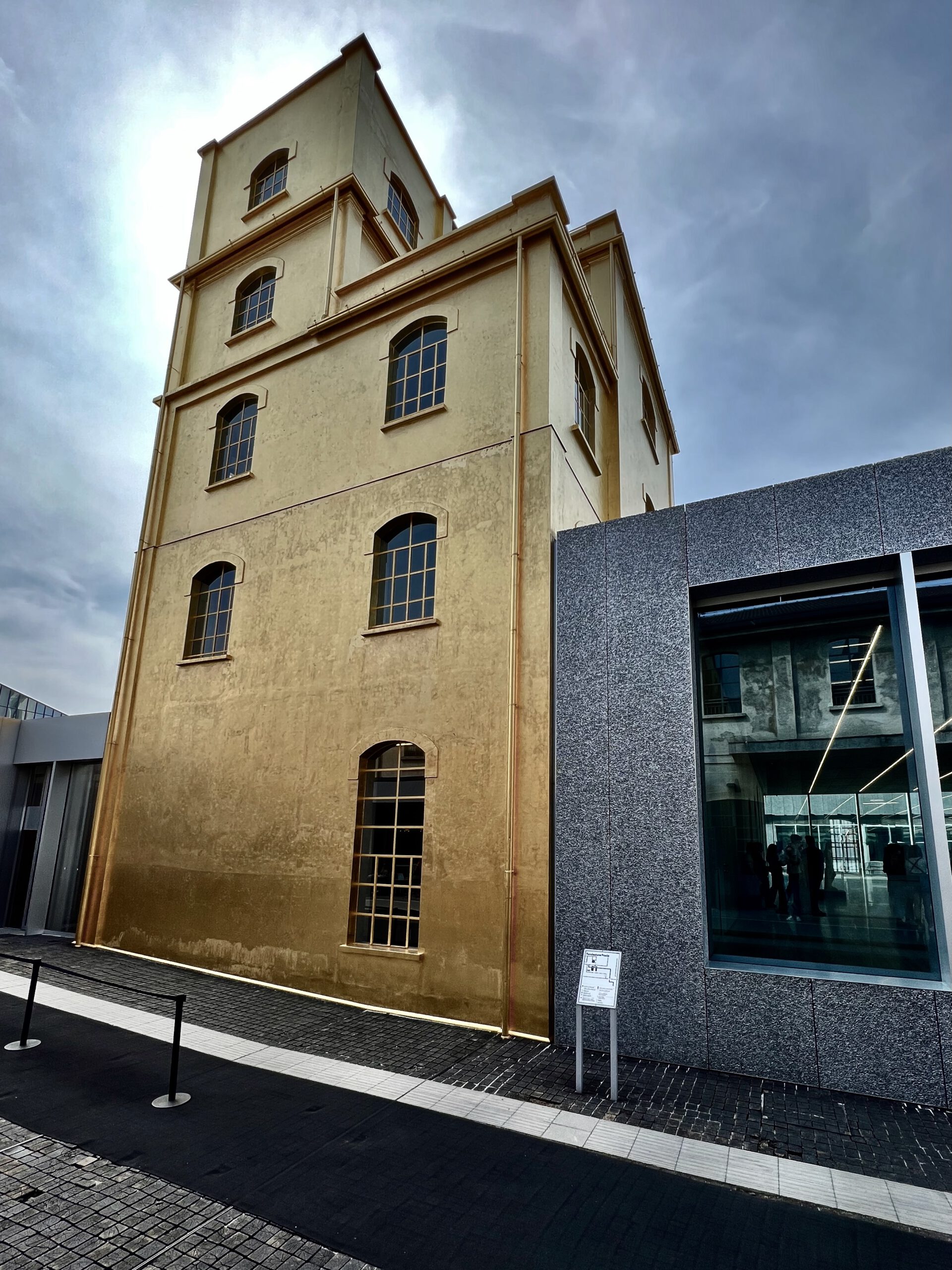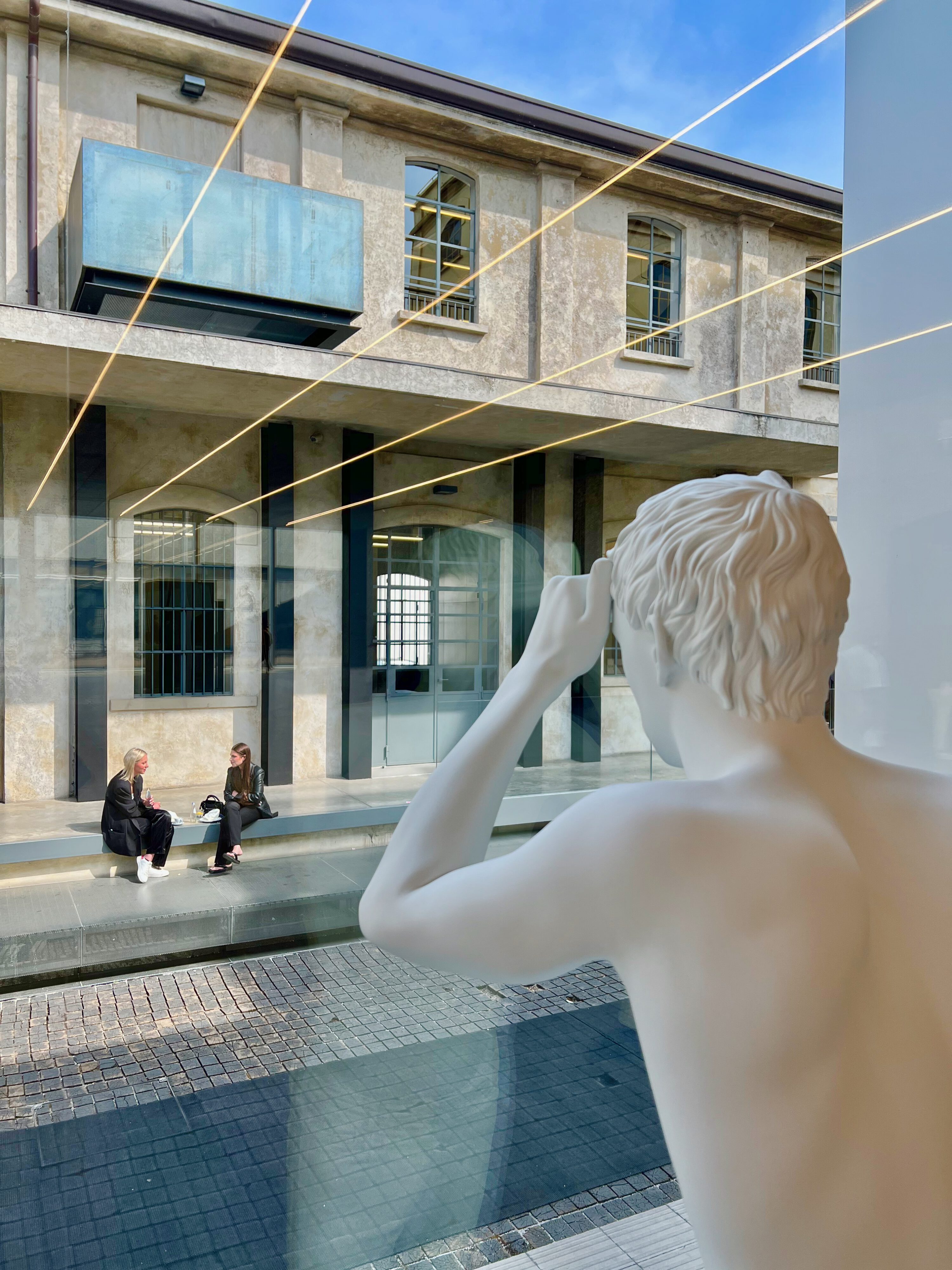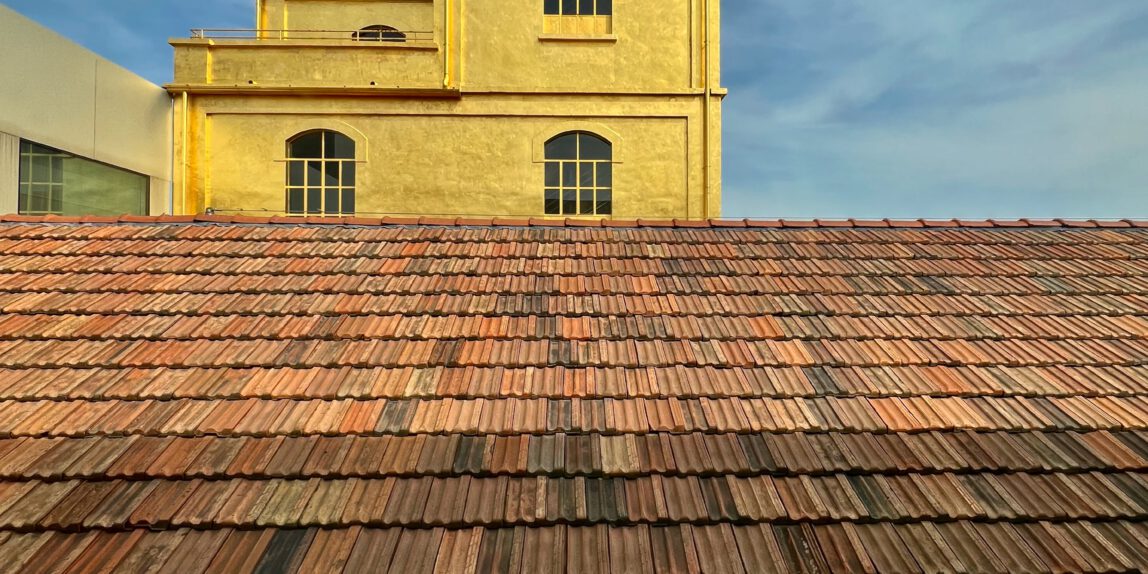
Fondazione Prada in Milan is a contemporary art and cultural center designed by the Dutch architect Rem Koolhaas and his firm, OMA. The architecture of the Fondazione Prada is characterized by its unique and innovative design, which combines new and old elements in a striking way.
The complex is composed of several buildings, each with its own distinctive features. The main building, which was originally a distillery dating back to the 1910s, has been transformed into a modern art space while retaining some of its original elements such as the brick walls, the chimney and the industrial windows.
The exterior of the main building features a distinctive gold leaf-covered facade that is both striking and evocative. The facade is made of three-dimensional, textured panels that create a dynamic interplay of light and shadow throughout the day. The panels also serve as a canvas for a series of murals by contemporary artists.
Other buildings on the site include a tower covered with a metal mesh screen, a cinema with a glass facade, and a mirror-clad pavilion. The interior spaces are equally striking, with a mix of raw and refined materials such as concrete, steel, glass, and wood that create a sense of industrial chic.
Overall, the architecture of the Fondazione Prada is a unique blend of old and new, industrial and refined, and evokes a sense of both innovation and nostalgia. The complex is a must-see for art and architecture enthusiasts visiting Milan.


Rem Koolhaas is a Dutch architect, urbanist, and theorist who is considered one of the most influential architects of the 21st century. He is the founder of the architectural firm OMA (Office for Metropolitan Architecture), which he established in 1975 with fellow architects Elia Zenghelis, Zoe Zenghelis, and Madelon Vriesendorp.
Koolhaas and OMA are known for their innovative and often controversial designs, which challenge conventional architectural thinking and push the boundaries of what is possible in building design. Some of their most notable works include the CCTV Headquarters in Beijing, the Casa da Música in Porto, and the Seattle Central Library.
Koolhaas’s design philosophy is grounded in a deep understanding of the social, political, and economic contexts in which buildings are situated. He believes that architecture should respond to the changing needs and desires of people and reflect the evolving nature of society. His work often incorporates elements of irony, satire, and humor, challenging the viewer to think critically about the built environment.
Koolhaas has received numerous awards and honors for his contributions to architecture, including the Pritzker Architecture Prize in 2000. OMA continues to be a leading force in contemporary architecture, with offices around the world and ongoing projects in a variety of contexts, from urban planning to museum design to private residences.


Elmgreen & Dragset’s work “Useless Bodies?“ at Fondazione Prada: “Useless Bodies?” is a sculptural installation that was first presented at the Victoria and Albert Museum in London in 2016.
The installation consists of a group of six hyperrealistic male figures that are slumped or lying on the floor of a gallery space. Each figure is unclothed and appears to be in a state of rest or repose, with their eyes closed and limbs splayed in different directions.
The work is meant to provoke a sense of discomfort or unease in the viewer, as the figures seem simultaneously vulnerable and imposing. The title “Useless Bodies” alludes to the idea of the human body as a commodity in modern society, as well as to the broader issue of social and political power structures that shape our understanding of the body.
Elmgreen & Dragset are known for their provocative and thought-provoking installations that often explore themes of power, identity, and social norms. “Useless Bodies” is a powerful example of their work, challenging viewers to question their own assumptions and beliefs about the body and its place in contemporary culture.
Elmgreen & Dragset is a collaborative duo consisting of Michael Elmgreen, who was born in Denmark in 1961, and Ingar Dragset, who was born in Norway in 1969. They have been working together since the mid-1990s and are known for their provocative and often humorous installations that challenge social and political conventions.
Elmgreen & Dragset’s work often explores themes of power, identity, and the relationship between the individual and the built environment. They frequently use sculpture, installation, and performance to create immersive environments that engage the viewer in a range of emotional and intellectual responses.
Some of their most well-known works include “Prada Marfa”, a replica of a Prada store located in the Texas desert, “Van Gogh’s Ear”, a swimming pool in the shape of the artist’s ear, and “Powerless Structures, Fig. 101”, a sculpture of a boy on a rocking horse that was installed on the Fourth Plinth in London’s Trafalgar Square.
Elmgreen & Dragset have exhibited their work at major institutions and events around the world, including the Venice Biennale, the Tate Modern in London, and the Museum of Contemporary Art in Chicago. They were awarded the Special Exhibition Award at the Venice Biennale in 2009 for their installation “The Collectors”, which transformed the Danish and Nordic Pavilions into the fictional homes of two art collectors.


One Reply to “Fondazione Prada”
Comments are closed.